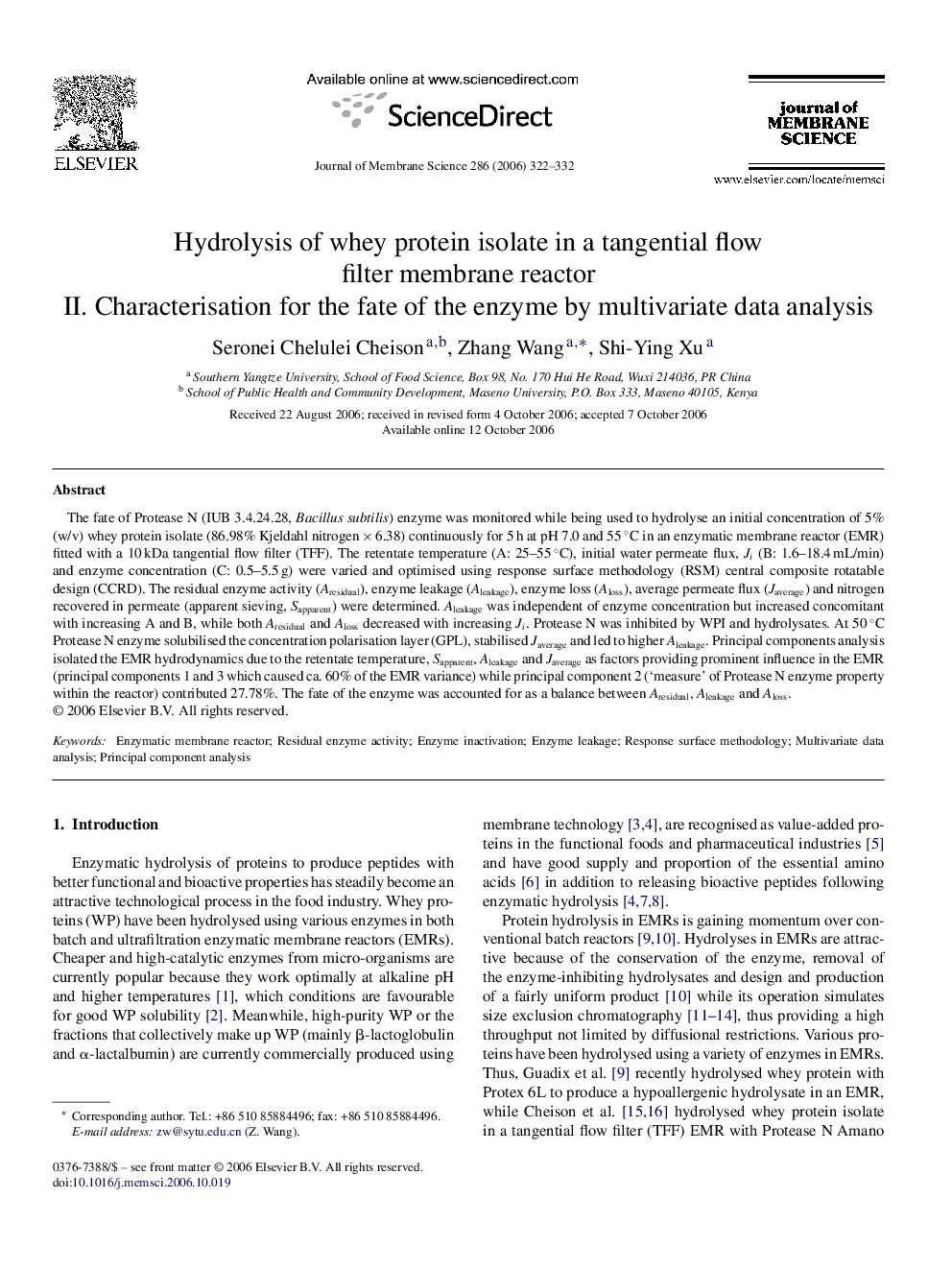| Article ID | Journal | Published Year | Pages | File Type |
|---|---|---|---|---|
| 639018 | Journal of Membrane Science | 2006 | 11 Pages |
Abstract
The fate of Protease N (IUB 3.4.24.28, Bacillus subtilis) enzyme was monitored while being used to hydrolyse an initial concentration of 5% (w/v) whey protein isolate (86.98% Kjeldahl nitrogen Ã 6.38) continuously for 5 h at pH 7.0 and 55 °C in an enzymatic membrane reactor (EMR) fitted with a 10 kDa tangential flow filter (TFF). The retentate temperature (A: 25-55 °C), initial water permeate flux, Ji (B: 1.6-18.4 mL/min) and enzyme concentration (C: 0.5-5.5 g) were varied and optimised using response surface methodology (RSM) central composite rotatable design (CCRD). The residual enzyme activity (Aresidual), enzyme leakage (Aleakage), enzyme loss (Aloss), average permeate flux (Javerage) and nitrogen recovered in permeate (apparent sieving, Sapparent) were determined. Aleakage was independent of enzyme concentration but increased concomitant with increasing A and B, while both Aresidual and Aloss decreased with increasing Ji. Protease N was inhibited by WPI and hydrolysates. At 50 °C Protease N enzyme solubilised the concentration polarisation layer (GPL), stabilised Javerage and led to higher Aleakage. Principal components analysis isolated the EMR hydrodynamics due to the retentate temperature, Sapparent, Aleakage and Javerage as factors providing prominent influence in the EMR (principal components 1 and 3 which caused ca. 60% of the EMR variance) while principal component 2 ('measure' of Protease N enzyme property within the reactor) contributed 27.78%. The fate of the enzyme was accounted for as a balance between Aresidual, Aleakage and Aloss.
Keywords
Related Topics
Physical Sciences and Engineering
Chemical Engineering
Filtration and Separation
Authors
Seronei Chelulei Cheison, Zhang Wang, Shi-Ying Xu,
